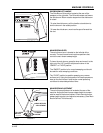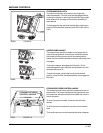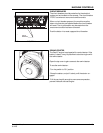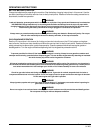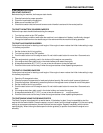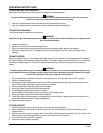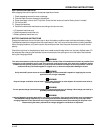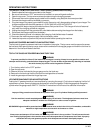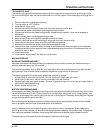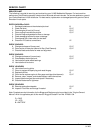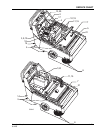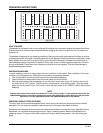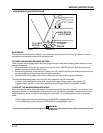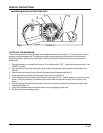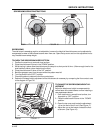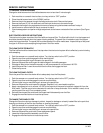
American-Lincoln 1 - 19
91 WS
TO CHANGE LP TANK
The tank changing operation presents an opportunity for the operator to inspect the tank, tank fittings and the
fuel lines for damage or wear that could cause leaks in the LP fuel system. Follow these steps to change the LP
tank.
1. Park the machine in a designated safe area.
2. Turn key switch to “OFF” position.
3. Close the tank supply valve.
4. Remove the machine fuel supply hose quick disconnect coupling from the tank.
5. Inspect the fuel system components for damage and abnormal wear.
6. Remove the tank from the cradle holding device. Handle the tank carefully. It must not be dropped or
mishandled.
7. Store the empty tank in the designated storage area.
8. Select a filled LP tank and inspect for damage and abnormal wear.
9. Carefully install the tank so the centering pin aligns with the hole in the tank collar.
10. Fasten the tank hold down clamp so that the tank locks into position.
11. Reconnect the machine fuel supply hose to the tank supply coupling.
12. Open the tank supply valve and inspect for leaks. If leaks are present close the supply valve immediately.
Investigate the source of the leak and have it repaired before using the machine. If no leaks are found, the
machine is ready to start.
13. Close the top cover.
14. Close the tank supply valve if the machine is to be stored.
MACHINE STORAGE
GASOLINE POWERED MACHINES
Machines to be stored over 30 days should be completely drained of fuel to prevent gum deposits forming on
essential carburetor parts, fuel filter and tank.
The use of a fuel additive, such as STA-BIL, or an equivalent, will minimize the formation of fuel gum deposits
during storage. Such an additive may be added to the gasoline in the fuel tank of the engine.
The following procedure should be used to prepare the machine for storage:
1. All fuel should be removed from the tank. Run the engine until it stops from lack of fuel.
2. While engine is still warm, drain oil from the crankcase. Refill with fresh oil.
3. Remove spark plug, pour approximately 1/2 ounce (15 grams) of engine oil into cylinder and crank slowly to
distribute oil. Replace spark plug.
4. Store in a clean and dry area.
BATTERY POWERED MACHINES
All wet batteries will slowly discharge on standing and will discharge much faster when warm than when cold. At
normal temperature of 80°F (26°C) loss of capacity by self-discharge, starting with a fully charged battery, may
amount to an average of .001 specific gravity per day over a 30 day period. The battery should be given a booster
charge when the specific gravity falls .040.
Do not discharge the batteries excessively. Excessive discharge can cause polarity reversal of the individual
cells in the battery which will lead to complete failure of the batteries.
Use a hydrometer to monitor the specific gravity of the individual cells in the batteries. When checking the
specific gravity of the batteries, you should not see a large difference between the individual cells. The batteries
may need to be replaced if the battery shows a significant difference of specific gravity between the cells.
The specific gravity of the electrolyte should measure 1.285 when fully charged.
OPERATING INSTRUCTIONS



